Oracle MySQL HeatWave Inflection Point

Wikibon believes MySQL Heatwave is an inflection point in cloud databases. HeatWave converges OLTP and OLAP into a single database and accelerates MySQL queries by a factor of up to 1,000 times. In addition, by leveraging integrated hardware and software, HeatWave eliminates the need for lengthy ETL processes. As a result, it improves the ability to deploy smarter transactional applications, automating more complex business processes.
As a result, enterprise IT early adopters can expect MySQL HeatWave to perform about seven times faster than AWS Redshift or Snowflake at a 2-5 times lower cost. HeatWave was measured as 17.5 times faster and less than half the cost of AWS Aurora, which is 42 times better price-performance.
Alibaba, AWS, Google, Microsoft, and Snowflake will need some time to rearchitect their MySQL offerings and their IaaS & PaaS platforms to run converged databases properly. In addition, most of these vendors will need to invest heavily in other converged database hardware and software.
Wikibon strongly recommends that enterprise IT departments set a three-year plan to eliminate separate OLAP databases and ETL from MySQL transactional databases and move to MySQL converged databases that support transactional and analytic workloads. MySQL HeatWave, the only platform that currently delivers these characteristics, is the obvious platform to evaluate now and for the next few years.
Cloud Database Migration Costs: AWS RDS for Oracle vs. Oracle ATP

The fundamental premise is that high-value specialist workloads such as large-scale mission-critical databases mandate a specialized combination of hardware, software, and automation. This is true for both cloud and on-premises deployments.
This research expects that a specialist cloud service with automation, and with an architecture that enables ultra-low latency, high levels of consolidation, and fast recovery (e.g., Oracle ATP with Exadata on OCI*) will result in significantly lower IT budget costs and expected downtime costs when compared with general-purpose cloud architectures (e.g., AWS Single-AZ RDS for Oracle**).
Wikibon concludes that the Oracle Exadata architecture is the best available platform for mission-critical Oracle Database workloads. Wikibon strongly recommends that IT organizations run mission-critical Oracle Database workloads using Autonomous Database on Exadata infrastructure, either in their own data centers or in Oracle Cloud Infrastructure. Furthermore, given the significant financial advantages for the Oracle solution over AWS, CFOs should not hesitate in approving projects for the migration of Oracle Databases to Oracle ATP on Exadata X8M in OCI.
Wikibon’s discussions with Oracle Database users have shown a strong level of confidence in Oracle’s Exadata cloud strategy, which offers both automated Autonomous Database and less-automated Oracle Database environments on both Exadata infrastructure in OCI regions and Exadata Cloud@Customer in customers’ data centers. These users have found out (sometimes the hard way) that migrating Oracle Database to AWS is expensive, that Oracle’s specialized architecture does a much more efficient, cost-effective job for database workloads, and that the AWS architecture may not provide the same level of availability as an Exadata-based solution. Recently, Deutsche Bank has publicly committed to implementing the Oracle Exadata Cloud@Customer platform worldwide to help accelerate technology modernization.
Wikibon recommends that the “Expected Budget” for downtime costs should be held by IT, as IT engineers are in the best position to optimize spend on capabilities to reduce downtime and downtime costs.
